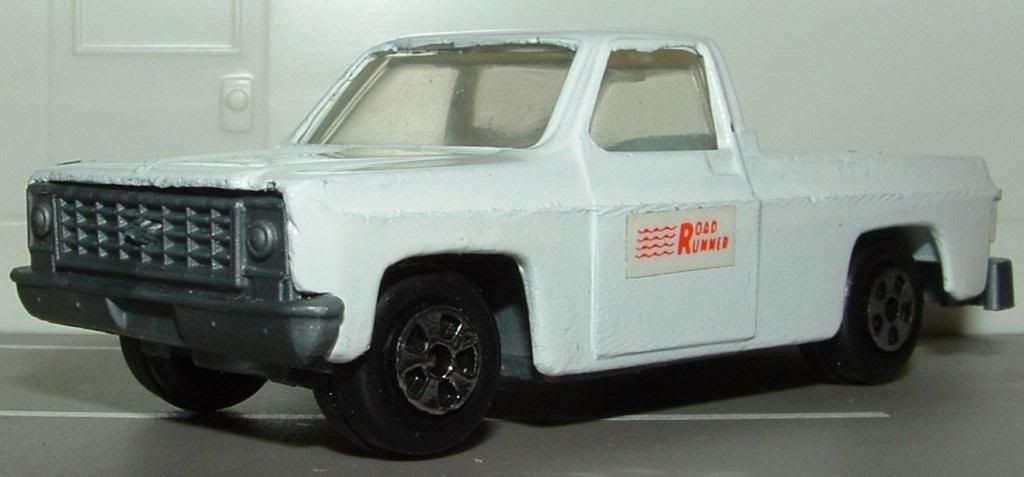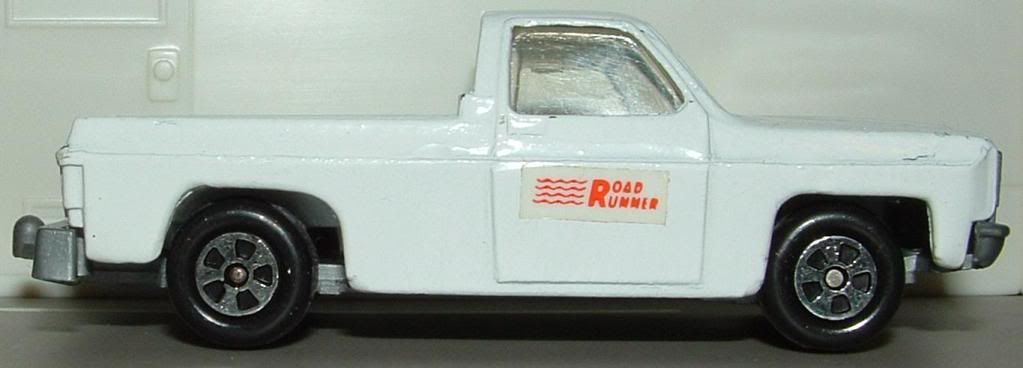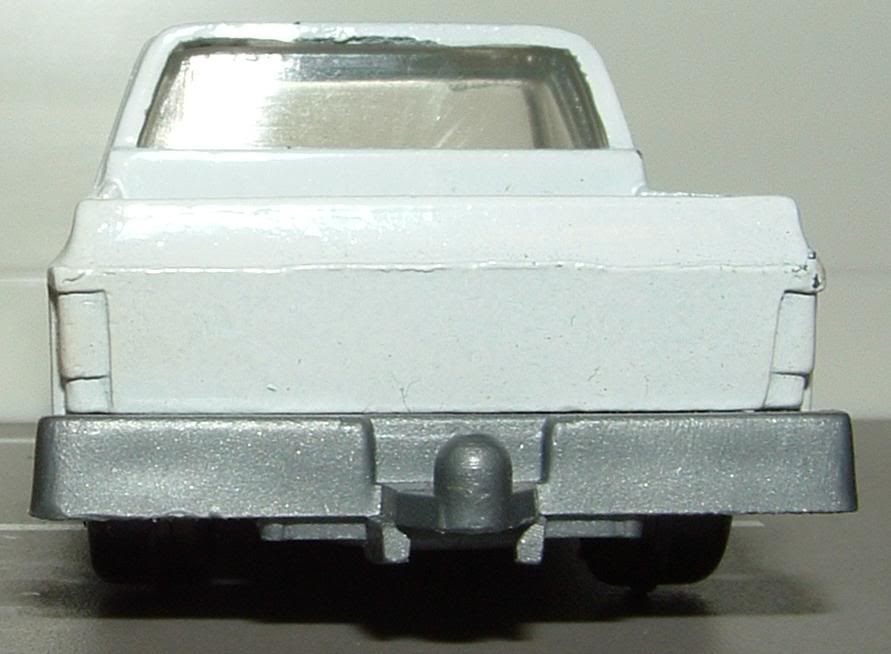
A blog focusing on 1/64 diecast from such popular brands as Hot Wheels, Matchbox, Johnny Lightning, M2 Machines, GreenLight, Tomica, Yat Ming, Majorette, MotorMax, Siku, Corgi, Guisval, Playart, Ertl, Zylmex, Racing Champions, & many more. Swifty's Garage features a daily Car Of The Day and news updates from your favorite brands!
Saturday, April 2, 2011
Truck Of The Day: April 2, 2011
Today's car of the day is Ertl's 1978 Chevrolet C/K Series Fleetside.
The C/K is the name for Chevrolet and GMC's full-size pickup truck line from 1960 until 1999 in the United States, from 1965 to 1999 Canada, from 1964 through 2001 in Brazil, and from 1975 to 1982 in Chile. The first Chevrolet pickup truck appeared in 1924, though in-house designs did not appear until 1930. "C" denoted two-wheel drive while "K" denoted four-wheel drive. The C/K light-duty pickup truck was replaced with the Chevrolet Silverado and GMC Sierra in 1999 in the US and Canada, and 2001 in Brazil; the Chevrolet Silverado HD and GMC Sierra HD heavy-duty pickup trucks followed in 2001.
For more information and pictures of the real car please visit: Chevrolet C/K Series
This is a crude model, even by Ertl's standards, but it still has it's charm.
An all-new clean sheet redesign of General Motor’s (GM) Chevrolet and GMC brand C/K-Series pickups débuted in 1972 for the 1973 model year. Development of the new third generation trucks began in 1968, four years prior to production in 1972, with vehicle components undergoing simulated testing on computers, before the first prototype pickups were even built for real world testing. The redesign was revolutionary in appearance at the time, particularly the cab, departing from typical American pickup truck designs of the era. As a result, the third generation quickly became known as the "rounded-line" generation; although some people refer to them as "square bodys", given that the trucks appear square-like by more modern standards.
GM's design engineers fashioned the "rounded-line" exterior in an effort to improve aerodynamics and fuel efficiency, using wind tunnel technology to help them sculpt the body. Third generation design traits include "double-wall" construction, sleek sculpted body work, flared secondary beltline and a aerodynamic cab which featured rounded doors cutting high into the roof and steeply raked windshield featuring an available hidden radio antenna embedded into the glass.
There were two types of pickup boxes to choice from. The first type, called "Fleetside" by Chevrolet and "Wideside" by GMC, was a "double-wall" constructed full width pickup box and featured a flared secondary beltline to complement the cab in addition to new wraparound tail lamps. Both steel and wood floors were available. The second type, called "Stepside" by Chevrolet and "Fenderside" by GMC, was a narrow width pickup box featuring steps and exposed fenders with standalone tail lamps. Initially, only wood floors were available.
The wheelbase length was extended to 117.5 in (2985 mm) for the short wheelbase pickups, and 131.5 in (3340 mm) for the long wheelbase pickups. A new dual rear wheel option called "Big Dooley" was introduced on 1-ton pickups, along with a new Crew Cab option on the 164.5 in (4178 mm) wheelbase. Crew Cabs were available in two versions: a "3+3" which seated up to six occupants and "bonus cab" which deleted the rear seat and added rear lockable storage in its place. The fuel tank was moved from the cab to the outside of the frame, and a dual tank option was available which brought fuel capacity to 40 US gallons.
The rounded-line generation ultimately ran for a lengthy 15 model years (1973–1987) with the exception of 1-ton and Blazer, Jimmy, and Suburban versions, which continued up until the 1991 model year.
Subscribe to:
Post Comments (Atom)






No comments:
Post a Comment